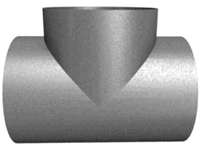



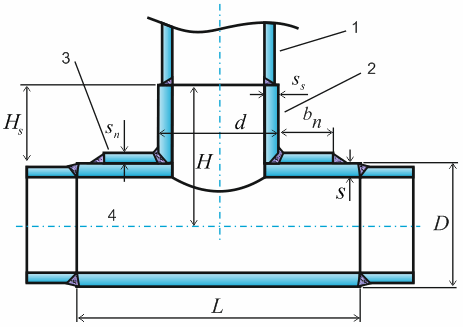

1 - Run pipe, 2 - Branch pipe, 3 - Reinforcement pad, 4 - Tee header
Fabricated tee with perpendicular header and branch axes, featuring increased wall thickness in header and/or branch. Branch pipe with increased wall thickness welded to header.

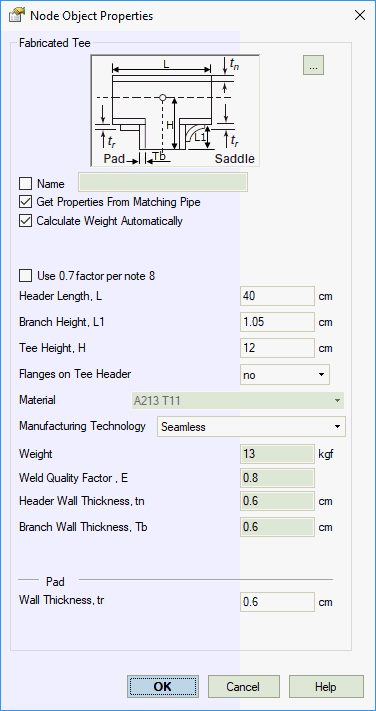
Property |
Description |
Name |
Element identifier. When checked, displays in 3D view. |
Branch not perpendicular to header |
When checked, analyzes as slanted stub-in without angle validation. When unchecked, validates 90-degree joint and displays error if not perpendicular. |
Weight |
Tee weight including flanges, excluding insulation and fluid. Uses standard value without overload factor. Fluid and insulation weights with overload factors calculated automatically from adjoining pipes. |
Automatic weight calculation |
When selected, calculates tee weight as total volume of header and branch cylinders. |
Longitudinal Weld Joint Efficiency Factor, E |
Longitudinal weld joint efficiency factor. More... |
Manufacturing technology |
For ASME B31.1, ASME B31.3, DL/T 5366-2014: seamless pipe uses Wl=1.0; electric-welded pipe uses Wl from database. More... For GOST 32388-2013, pipe properties vary by type (seamless/welded) from different materials databases. |
Use notes 6,9,10 |
Enable for displacement cycles exceeding 200.
|
Meet D1, Note 10 a,c,d,e,f |
|
Use 0.7 factor per note 8 |
Apply ASME B31J code requirement (8)
|
Branch wall thickness, Tb |
Nominal (actual) branch wall thickness. For ASME B31J, effective branch wall thickness Tb=t' per note (8). |
Flanges on tee header |
ASME B31J Note 7 requirement 0 - No flanges 1 - One flange (one end) 2 - Two flanges (both ends) |
Material |
Material selection from materials database |
Nominal header wall thickness, S |
Header wall thickness used for SIF, flexibility factors, and section modulus calculations. |
Header length, L |
Tee header length. Used for accurate weight calculation (see "weight") |
Mill tolerance |
Manufacturing tolerance at production. More... |
Corrosion allowance |
Corrosion and wear allowance for wall thickness. More... |
Branch height, L1 (Hs) |
Branch height dimension. |
Tee height, H |
Tee height from header axis to branch end. Tee height = D/2 + branch height. |
Pad thickness, tr (Sn) |
Reinforcement pad thickness. |
Pad width, bn |
Reinforcement pad width. |
Design Factor, Df |
Design factor per ASME NM.1 table 2-3.2.2-2. |
Design Factor, DFt |
Design factor for test mode. Default DFt=1. |
Refresh SIF and k using FEA |
|
SIF |
PASS/START-PROF tee object model:
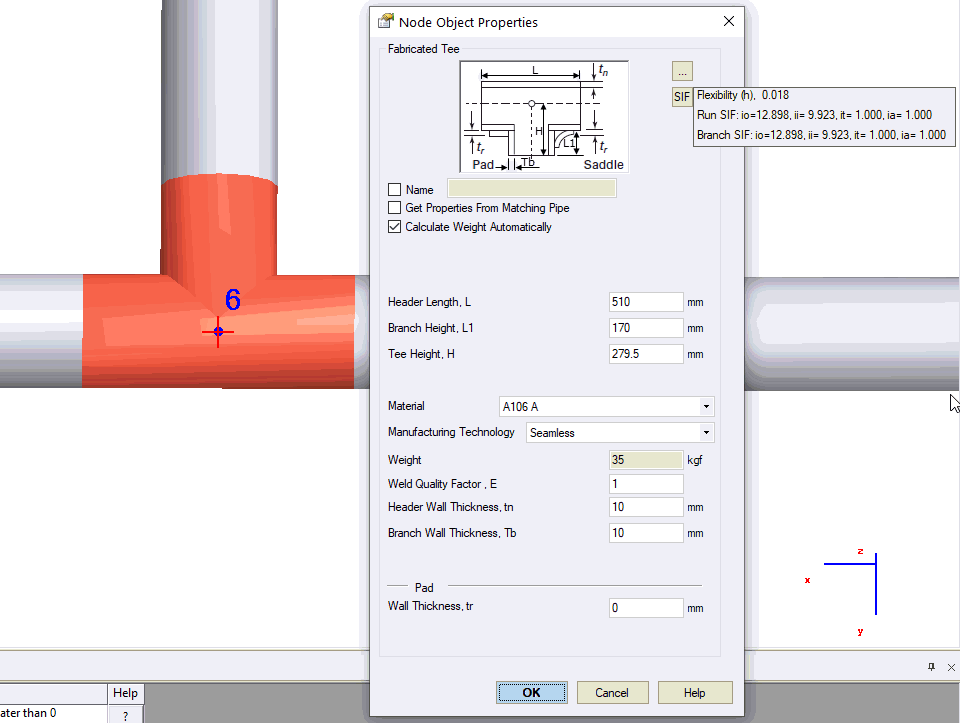
Internal tee model with different wall thicknesses for header and branch pipes. ASME B31J analysis adds flexible springs for header (2) or branch (1) flexibility. Rigid element (3) removes branch flexibility.
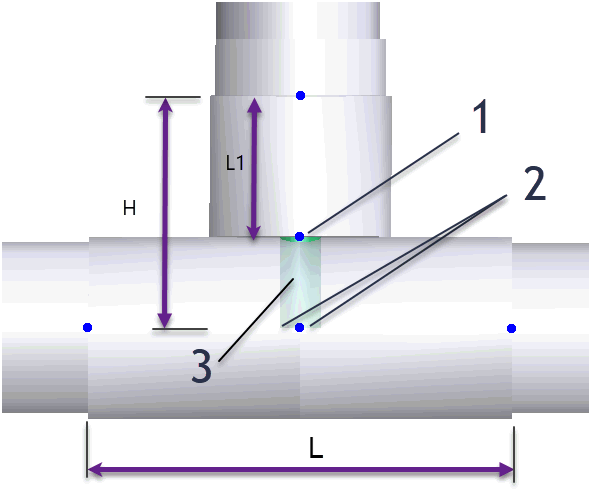
To insert fabricated tee, select node and use menu: Insert > Tee > Fabricated Tee
To view element properties:
Double-click element in 3D view
Select element
and click  toolbar icon
toolbar icon